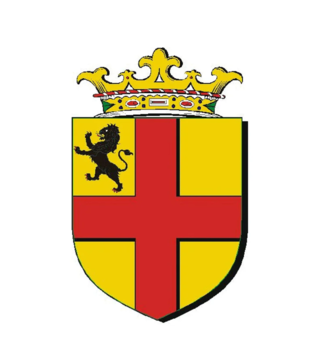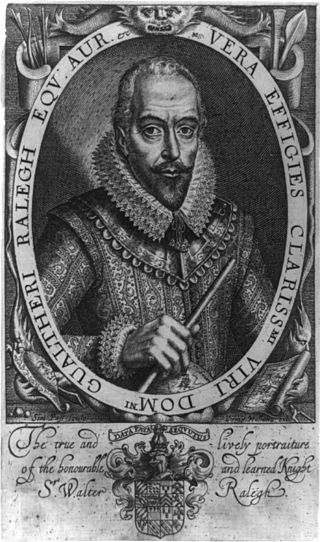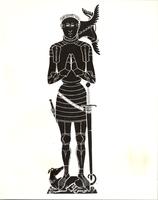Related Research Articles
Sir William Tresham JP was an English lawyer who served as Speaker of the House of Commons until 1450.

Clanricarde, also known as Mac William Uachtar or the Galway Burkes, were a fully Gaelicised branch of the Hiberno-Norman House of Burgh who were important landowners in Ireland from the 13th to the 20th centuries.

The Lord Warden of the Stannaries used to exercise judicial and military functions in Cornwall, England, UK, and is still the official who, upon the commission of the monarch or Duke of Cornwall for the time being, has the function of calling a stannary parliament of tinners. The last such parliament sat in 1753.

Merton Priory was an English Augustinian priory founded in 1114 by Gilbert Norman, Sheriff of Surrey under King Henry I (1100–1135). It was situated within the manor of Merton in the county of Surrey, in what is today the Colliers Wood area in the London Borough of Merton.

Walter Devereux, 8th Baron Ferrers of Chartley, KG was an English nobleman and a loyal supporter of the House of York during the Wars of the Roses. He was a member of the inner circle of King Edward IV, and died fighting for Edward's younger brother, King Richard III, at the Battle of Bosworth in 1485.
The Archdeacon of St Andrews was the head of the Archdeaconry of St Andrews, a sub-division of the Diocese of St Andrews, from the twelfth to the seventeenth century. The position was one of the most important positions within the medieval Scottish church; because of his area's large population and high number of parish churches, the Archdeacon of St Andrews may have exercised more power than many Scottish bishops. The following is a list of known archdeacons:

John Stourton, 1st Baron Stourton of Stourton, Wiltshire, was an English soldier and politician, elevated to the peerage in 1448.
The decade of the 1430s in art involved some significant events.
This is a list of Sheriffs of Norfolk and Suffolk. The Sheriff is the oldest secular office under the Crown and is appointed annually by the Crown. He was originally the principal law enforcement officer in the county and presided at the Assizes and other important county meetings. After 1576 there was a separate Sheriff of Norfolk and Sheriff of Suffolk.
Events from the 1430s in England.
Events from the year 1456 in England.
Events from the 1480s in England. This decade marks the beginning of the Tudor period.
Sir William Hawte was a prominent member of a Kentish gentry family of long standing in royal service, which, through its near connections to the Woodville family, became closely and dangerously embroiled in the last phases of the Wars of the Roses.
The Sheriff of Nottinghamshire, Derbyshire and the Royal Forests is a position established by the Normans in England.

The Mayor of Barnstaple together with the Corporation long governed the historic Borough of Barnstaple, in North Devon, England. The seat of government was the Barnstaple Guildhall. The mayor served a term of one year and was elected annually on the Feast of the Assumption of the Virgin by a jury of twelve. However Barnstaple was a mesne borough and was held by the Mayor and Corporation in chief not from the king but from the feudal baron of Barnstaple, later known as the lord of the "Castle Manor" or "Castle Court". The Corporation tried on several occasions to claim the status of a "free borough" which answered directly to the monarch and to divest itself of this overlordship, but without success. The mayor was not recognised as such by the monarch, but merely as the bailiff of the feudal baron. The powers of the borough were highly restricted, as was determined by an inquisition ad quod damnum during the reign of King Edward III (1327–1377), which from an inspection of evidence found that members of the corporation elected their mayor only by permission of the lord, legal pleas were held in a court at which the lord's steward, not the mayor, presided, that the borough was taxed by the county assessors, and that the lord held the various assizes which the burgesses claimed. Indeed, the purported ancient royal charter supposedly granted by the Anglo-Saxon King Æthelstan (d.939) and held by the corporation, from which it claimed its borough status, was suspected to be a forgery.

Sir John St Leger of Ulcombe in Kent, was Sheriff of Kent in 1430 and 1433.
This is a list of Sheriffs of Berkshire and Oxfordshire. One sheriff was appointed for both counties from 1248 until the end of 1566, after which separate sheriffs were appointed. See High Sheriff of Berkshire and High Sheriff of Oxfordshire for dates before 1248 or after 1566.
Events from the year 1430 in Ireland.